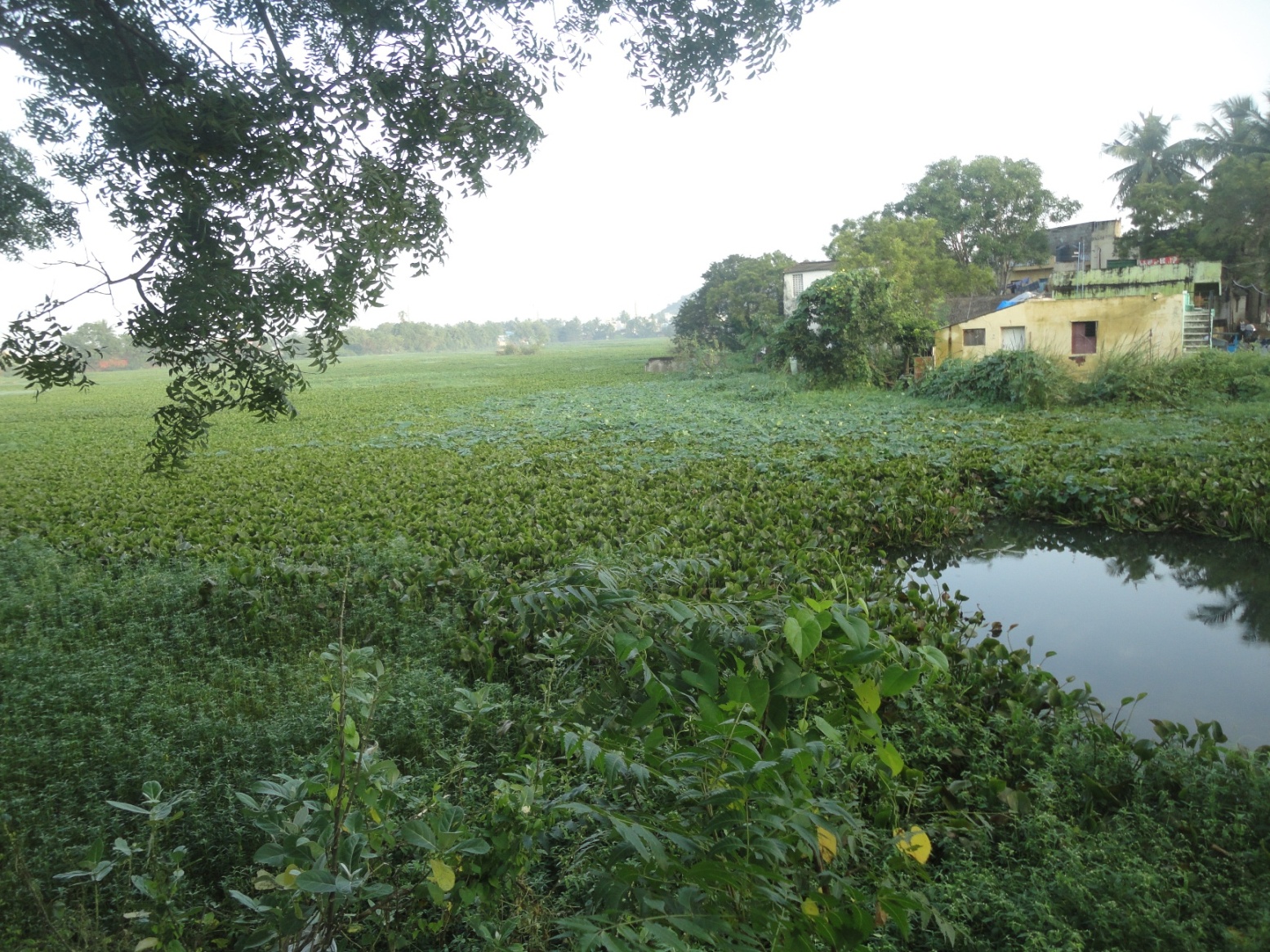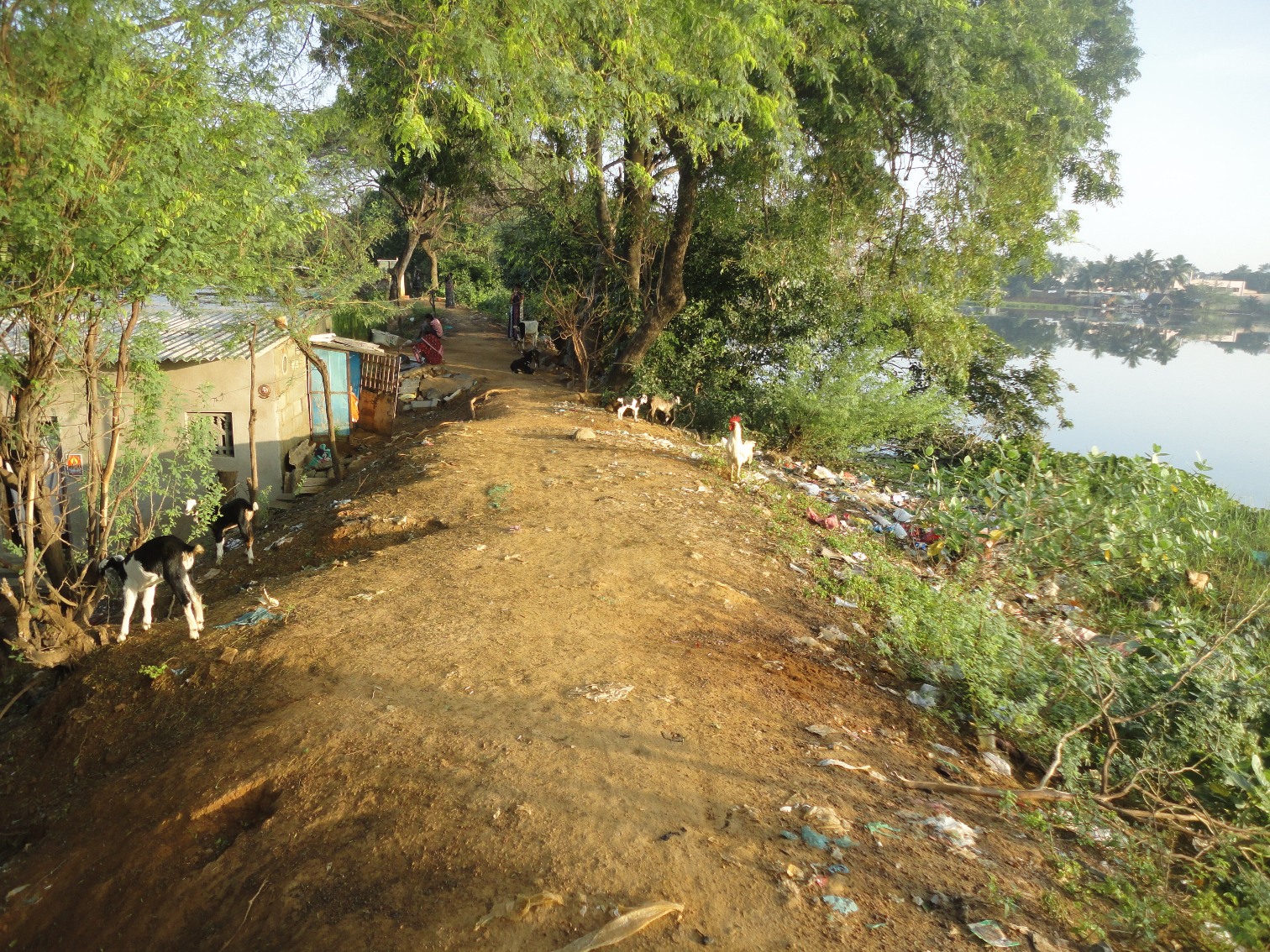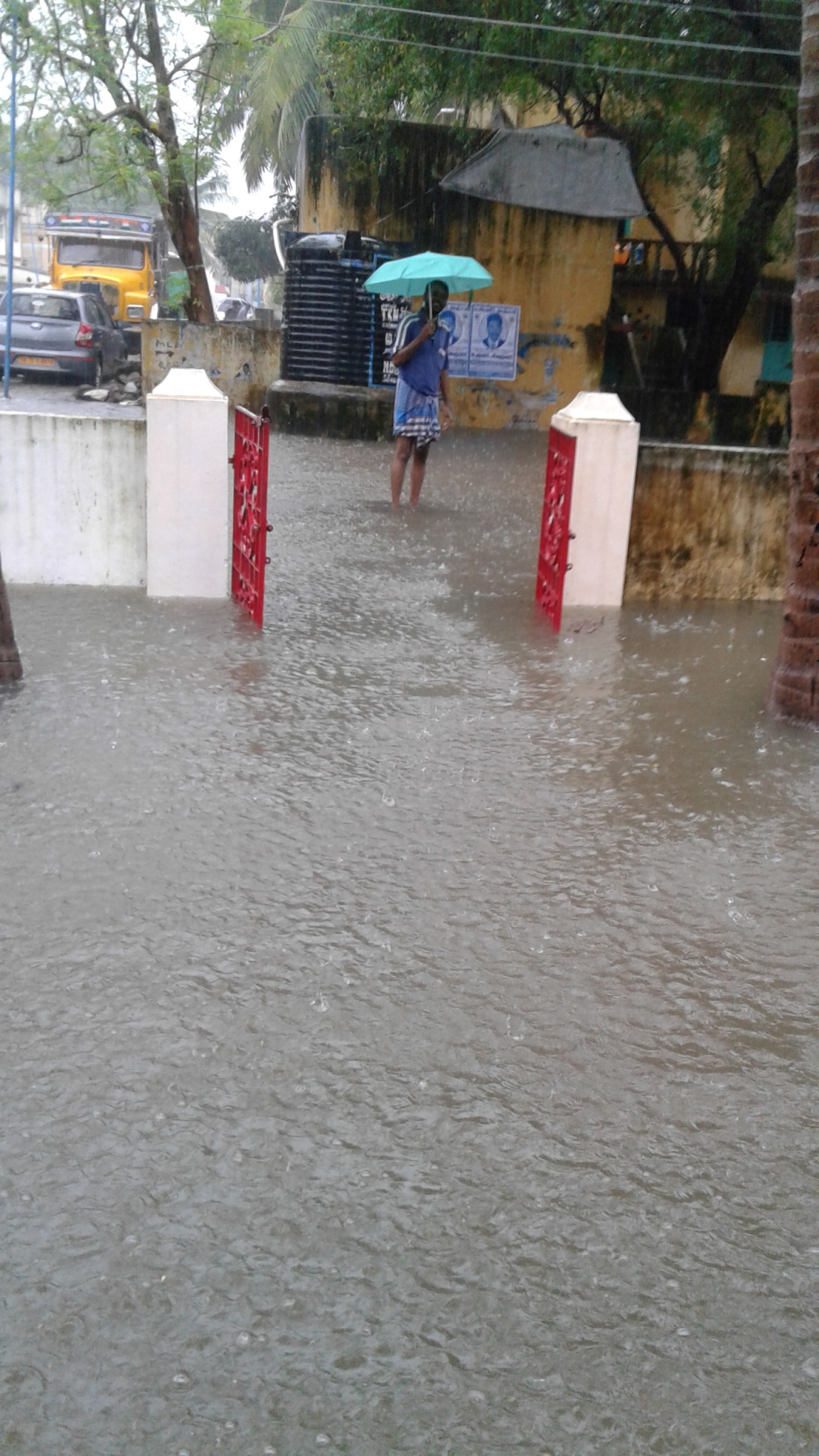The December 2015 rains in Tamil Nadu caused Chennai and its adjoining areas to be suddenly flooded. Huge portions of residential areas and roads were inundated for long periods of time. The rivers too flooded in an unprecedented manner, causing human loss and property damage to individuals, state and corporates. Looking at Irumbuliur Lake near Tambaram in Chennai, throws some light on the reasons for such widespread inundation.
What the lake was 
Irumbuliyur Lake is situated amidst a residential area; its catchment is Tambaram town and its adjoining areas. The lake is more than 50 acres in area, and it once irrigated more than 70 acres of paddy. Agricultural activities stopped since 1990, when land prices escalated due to its proximity to the National Highway and Tambaram town. A portion of irrigated land has already been converted into residential apartments; the remainder is being held by realtors. Thus in the absence of agricultural activities, there was no need to let water from the sluice, so they went on to become disused until they eventually disappeared.
Present status of the lake
Today the lake is always filled with the sewage water of Tambaram town, and the outlet releases this sewage throughout the year. The lake has not been cleaned for the past 30 years and the capacity of the tank is diminished due to excessive vegetation. Also, the water spread area of the tank is heavily occupied by encroachers, who have constructed well-built houses close to the water outlet and the water spread area of the tank. The height of the outlet has also been significantly reduced to avoid inundation to the encroachment in the area.
And the bund too encroached
 The tank bund too is weakened by encroachments. In fact, these encroachers have closed all the sluices and removed the structures from sluices. All the branch channels from sluices are completely occupied, and one cannot find even traces of these branch channels today. The tank bund road is made of concrete with no provision for water to be released from the sluices. The excess flow outlet ('kalingu' in Tamil) is the only means for water release from the tank. The entire rain water is expected to be drained only from this outlet. But the drainage is very bad and it ends abruptly after some distance. The drainage should have lead to the Adyar River, but here it is obstructed by encroachments including a National Highway bypass from Irumbuliyur to Maduravoil. Consequently, a new water body has appeared, with the heightened road as a bund, along the bypass road in private lands. This private land may be sold out as housing plots after sometime.
The tank bund too is weakened by encroachments. In fact, these encroachers have closed all the sluices and removed the structures from sluices. All the branch channels from sluices are completely occupied, and one cannot find even traces of these branch channels today. The tank bund road is made of concrete with no provision for water to be released from the sluices. The excess flow outlet ('kalingu' in Tamil) is the only means for water release from the tank. The entire rain water is expected to be drained only from this outlet. But the drainage is very bad and it ends abruptly after some distance. The drainage should have lead to the Adyar River, but here it is obstructed by encroachments including a National Highway bypass from Irumbuliyur to Maduravoil. Consequently, a new water body has appeared, with the heightened road as a bund, along the bypass road in private lands. This private land may be sold out as housing plots after sometime.
The drainage that was

The encroached drainage now is just 1-3 feet wide--tiny--compared to the 12 feet that it once was. Public memory and revenue records can confirm this fact. The reduced drainage was unable to carry the excess water from the tank. The remaining water escaped through many undefined channels, primarily through roads and gaps between houses inundating a large portion of houses that were below the road level. The waters of Irumbuliyur Lake along with those of Perungalathur and Tambaram lakes inundated Mudichur and even adjoining areas which were 3-6 km away from these water bodies. There too, houses were submerged in water, before the water could find its way to the Adyar River. In Mudichur and Manimanangalam, water has not drained even 15 days after the rains.
Could the floods have been prevented?
The state might have prevented or significantly reduced inundation if tanks had been maintained to optimal levels, tank encroachments removed (at least to the extent of protecting water levels), sluices maintained to release excess water through additional outlets and above all, the drainage restored to its breadth. The new places built at a greater height, created new low-lying areas and devastated many lives.
Urban planners seem to have forgotten the important fact that lakes were built on or along waterways. Lakes and waterways can only be altered by giving appropriate alternative means of storage and drainage. Further, if urban planners are to have a vision, they must give life to these water bodies.
View more pictures of the Irumbuliyur Lake and its adjoining areas.
The views and opinions expressed in this article are those of the author, and do not necessarily reflect those of India Water Portal.













